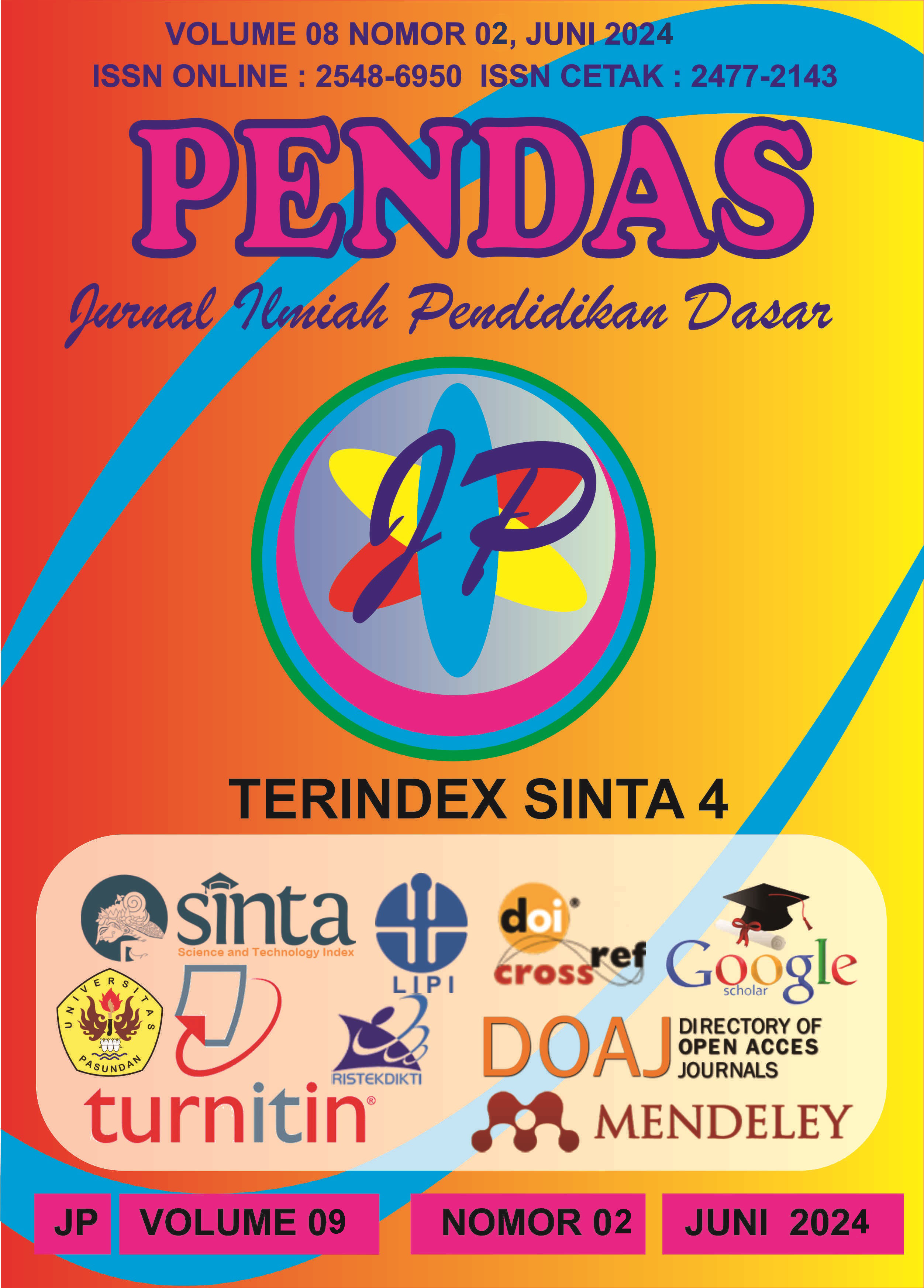PENERAPAN MODEL PROBLEM BASED LEARNING DENGAN PENDEKATAN CULTURALLY RESPONSIVE TEACHING UNTUK MENINGKATKAN KOLABORASI DAN HASIL BELAJAR PADA PEMBELAJARAN IPS DI SMPN 2 MOJOSARI
DOI:
https://doi.org/10.23969/jp.v9i2.14713Keywords:
Learning, Collaboration, MotivationAbstract
Cultural assimilation occurs when foreign cultures enter Indonesia, causing local cultures to disappear. In addition to being a popular center, foreign cultures make students less focused in receiving lessons. In addition, social studies lessons that are monotonous and use the lecture method make students not actively participate in class. This is indicated by learning outcomes that do not meet assessment completeness. Therefore, classroom action research was conducted in two cycles. The first cycle used a problem-based learning model, and the second cycle used a problem-based learning model combined with the Culturally Responsive Teaching (CRT) learning approach. The results of this study, showed that the PBL model integrated with the CRT approach improved learners' collaboration and learning outcomes and made them more active in learning because they were given contextual problems with local cultural heritage. In conclusion, the PBL model integrated with CRT approach can demonstrate the preservation of local culture in learning.Downloads
References
Marisa, M. (2021). Inovasi Kurikulum Merdeka Belajar di Era Society 5.0. Jurnal Sejarah, Pendidikan dan Humaniora.
Gay, G. (2010). Culturally Responsive Teaching: Theory, Research, and Practice. New York: Teachers College Press. Teachers College Press.
Arikunto, S. (2010). Metode Penelitian Arikunto Suharsimi. Rineka Cipta.
Dakhi, A. S. (2020). Peningkatan Hasil Belajar S i s w a . J u r n a l E d u c a t i o n a n d D e v e l o p m e n t , 8 ( 2 ) , 4 6 8 – 4 7 0 . https://journal.ipts.ac.id/index.php/ED/a rticle/view/1758
Dimensi, Elemen, dan Subelemen Profil Pelajar Pancasila pada Kurikulum Merdeka. (2022). Badan Standar, Kurikulum dan Asesmen Pendidikan Kementrian Pendidikan Kebudayaan, Riset dan Teknologi Republik Indonesia.
Djamarah, S. B., & Zain, A. (2010). Strategi Belajar Mengajar. Rineka Cipta.
Fathurrohman, M. (2015). Model-model Pembelajaran Inovatif. Ar-Ruzz Media.
Greenhill, V. (2010). 21st Century Knowledge And Skills In Educator Preparation.
Greenstein, L. (2012). Assessing 21st Century Skills: A Guide to Evaluating Mastery and Authentic Learning. Corwin.
Mariamah, S., Bachtiar, M. Y., & Indrawati. (2021). Penerapan Project Based L e a r n i n g U n t u k M e n i n g k a t k a n Kemampuan Kolaborasi Anak Usia Dini. Profesi Kependidikan, 2(1), 125130.
Niswara, R., Muhajir, & Untari, M. F. A. (2019). Pengaruh Model Project Based Learning Terhadap High Order Thinking Skill. Mimbar PGSD Undiksha, 7(2), 85–90.
Taher, T. (2023). Analisis Keterampilan Komunikasi dan Kolaborasi Siswa Introvert dengan Pendekatan Culturally Responsive Teaching. Jambura Journal of Education Chemistry, 5(1), 21–27.
Alfaeni, D., Nurkanti, M., & Halimah, M. (2022). Kemampuan Kolaborasi Siswa Melalui Model Project Based Learning Menggunakan Zoom Pada Materi Ekosistem. BIOEDUKASI Jurnal Pendidikan Biologi, 13(2), 143–149.
Downloads
Published
Issue
Section
License
Copyright (c) 2024 Pendas : Jurnal Ilmiah Pendidikan Dasar

This work is licensed under a Creative Commons Attribution 4.0 International License.



















